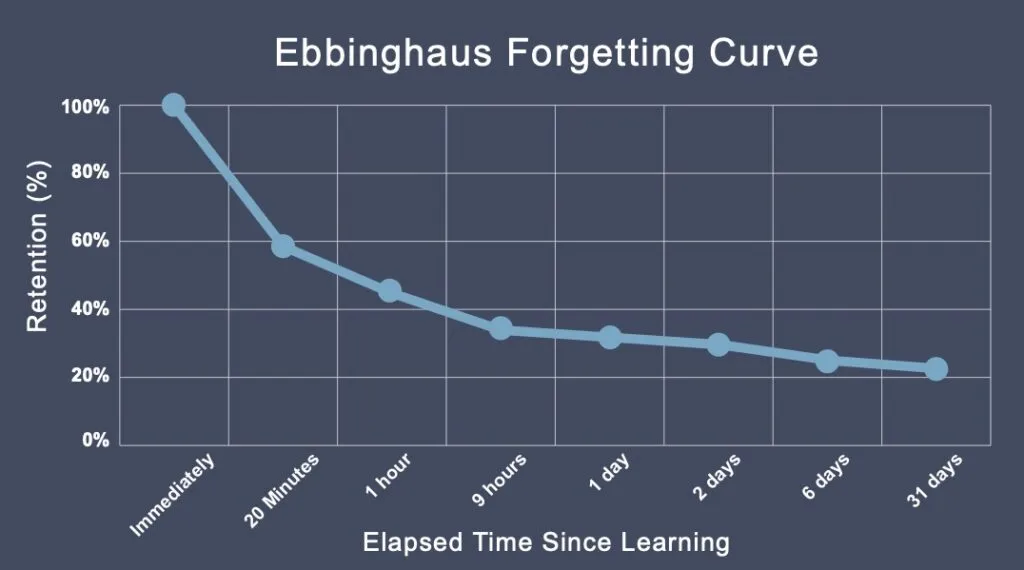Why 90% of Federal Training Fails (And How to Fix It with the Dojo Method)
The Crisis of Forgotten Knowledge
Federal agencies are facing a convergence of challenges: a wave of workforce retirements, shrinking budgets, and an urgent need to modernize critical systems. To address this, they invest $15-20 billion annually in training.
But there's a problem, and it's a significant one: almost none of it works.
Why do we say that? Research consistently shows that within 90 days of a typical training course, 80-90% of the knowledge is forgotten. Worse, only about 12% of new skills are ever actually applied on the job.¹
80–90% of traditional training is forgotten within 90 days and only about 12% is applied on the job. That’s why classrooms don’t change outcomes. The dojo approach fixes it.
For a Program Executives and CIOs, this means the vast majority of your training budget is wasted. You're spending money, your teams are spending time in classrooms, but mission outcomes don't improve. Inexperienced new hires are left unprepared for critical roles, and modernization projects stall. This isn't just inefficient—it's a threat to mission delivery.
The core of the issue lies in a 140-year-old psychological principle: the Ebbinghaus Forgetting Curve.
The Forgetting Curve: Why Classrooms Fail
In the 1880s, psychologist Hermann Ebbinghaus discovered a fundamental truth about memory: without reinforcement, we forget new information at a predictable and rapid rate.

The curve shows that we can lose over 50% of what we've learned within an hour and up to 70% within a day. Traditional, multi-day training workshops place learners at the very top of this curve, guaranteeing a steep drop-off in retention the moment they return to their desks.
In a high-pressure government environment, this forgetting is accelerated by:
- Immediate operational demands that override new information.
- A lack of experienced mentors to provide reinforcement.
- No opportunity to apply theoretical concepts to real-world government projects.
The result is "delivery theater" — teams go through the motions of a new process but revert to old habits because the knowledge never moved from short-term to long-term memory.
The Dojo Solution: Fusing Learning with Doing
If the problem is a lack of reinforcement and application, the solution is to make them part of the learning process itself. This is the foundation of the Dojo methodology.
A Dojo isn't a classroom; it's an immersive learning environment where teams work on their actual, mission-critical projects under the guidance of expert coaches.
Here’s the difference:
| Traditional Training | The Dojo Approach |
|---|---|
| Takes teams away from work | Embeds learning into the work |
| Uses generic, theoretical examples | Uses the team's real project backlog |
| Knowledge is forgotten in days | Skills are applied and retained immediately |
| Delivers a certificate | Delivers mission value |
Instead of a three-day workshop on Agile theory or Modern VRO™ methodology, a Dojo session might be a three-hour working session where a team builds its real product backlog, writes user stories for a feature they are currently developing, and sets up a CI/CD pipeline for their actual application.
This approach directly counteracts the forgetting curve through active recall and spaced repetition. By consistently applying new skills to their daily tasks over several weeks, teams build the "muscle memory" required for lasting behavior change. Knowledge retention rates skyrocket to as high as 90% because the learning is immediately relevant and continuously reinforced.²
Proven in the Real World: From Verizon to the DoD
This isn't just a theory; it's a model proven by both top-tier commercial companies and the most demanding parts of the U.S. government.
- Target used a Dojo model to reduce product deployment lead times from months to days.
- Verizon implemented dojos that enabled teams to launch products saving the company $2 million annually.
- The U.S. Air Force's Kessel Run software factory—essentially a large-scale, continuous dojo—saved over $500 million in fuel costs by rapidly developing a new air refueling planning application.³
These organizations didn't just train their people; they built lasting capability by changing the way their teams learned and worked.
Where to Start: Your First Step
For federal leaders looking to escape the cycle of ineffective training, the path forward is clear. Stop investing in approaches that are guaranteed to fail. Instead, identify a single, mission-critical project and pilot a Dojo.
By embedding learning directly into the workflow, you will not only see a dramatic improvement in your team's skills, but you will also accelerate the delivery of the projects that matter most.
Ready to learn more about implementing a Dojo in your organization? Contact us to schedule a consultation.
References
¹ Statistics compiled from research by GAO, Training Industry Research, and 24x7 Learning on training effectiveness and application rates.
² Semb, G., & Ellis, J. "Knowledge taught in school: what is remembered?" Review of Educational Research, vol. 64, no. 2, 1994, pp. 253–86. This study supports the high retention rates achieved through applied learning.
³ Kessel Run success metrics are widely documented in DevOps Enterprise Summit reports and GAO audits of DoD software factories.
